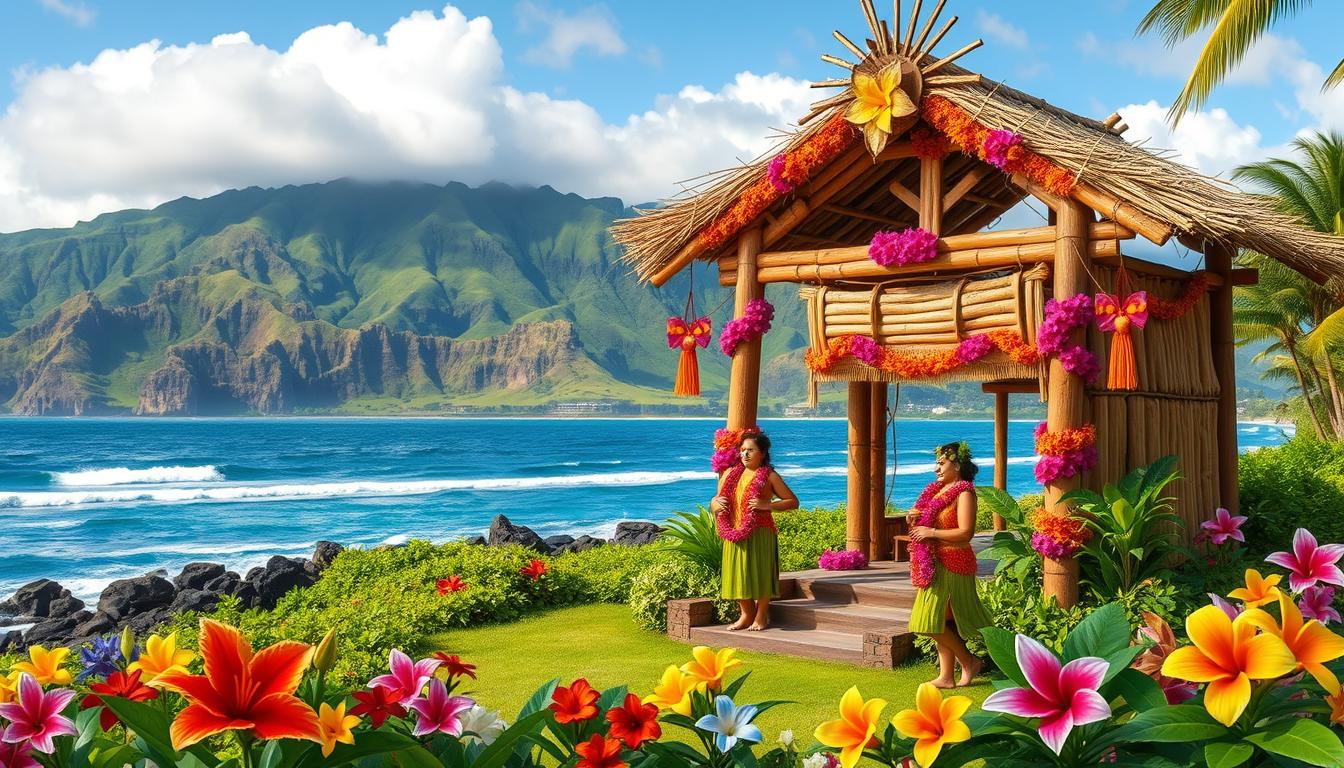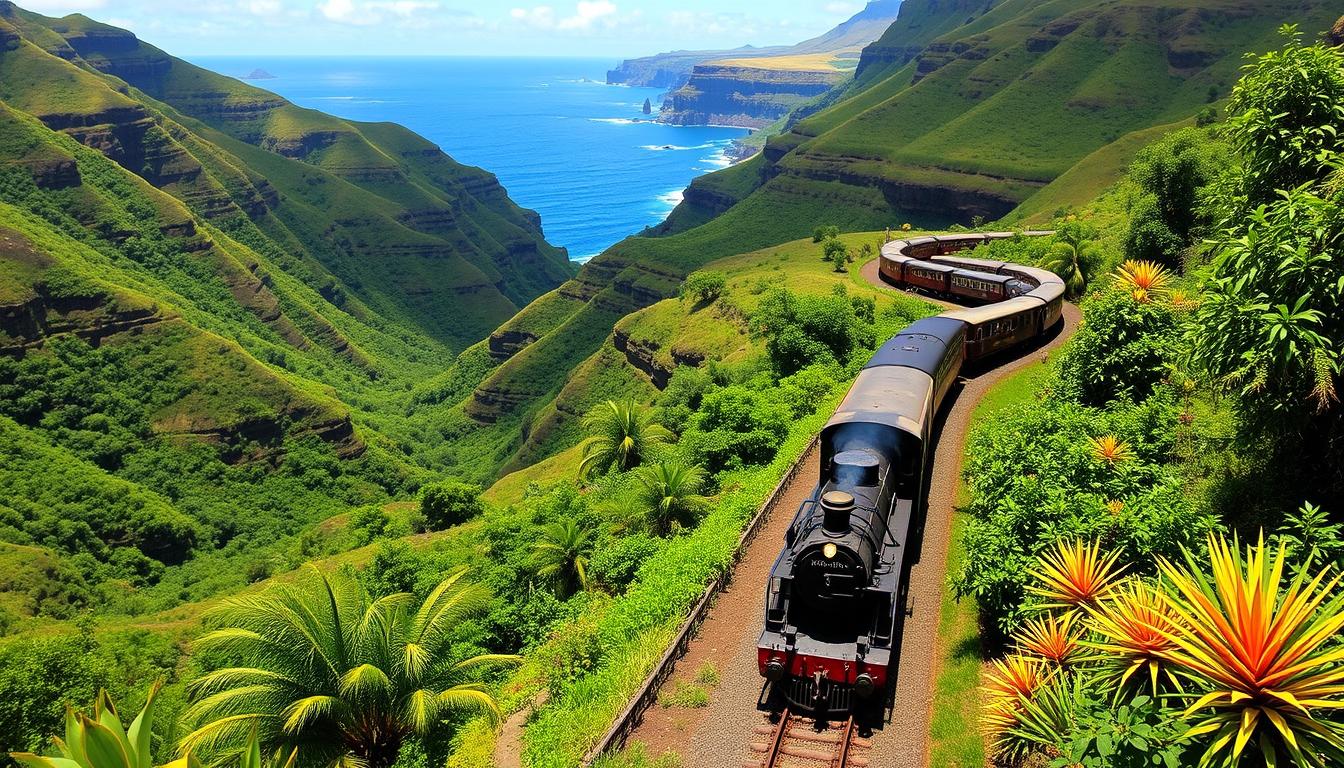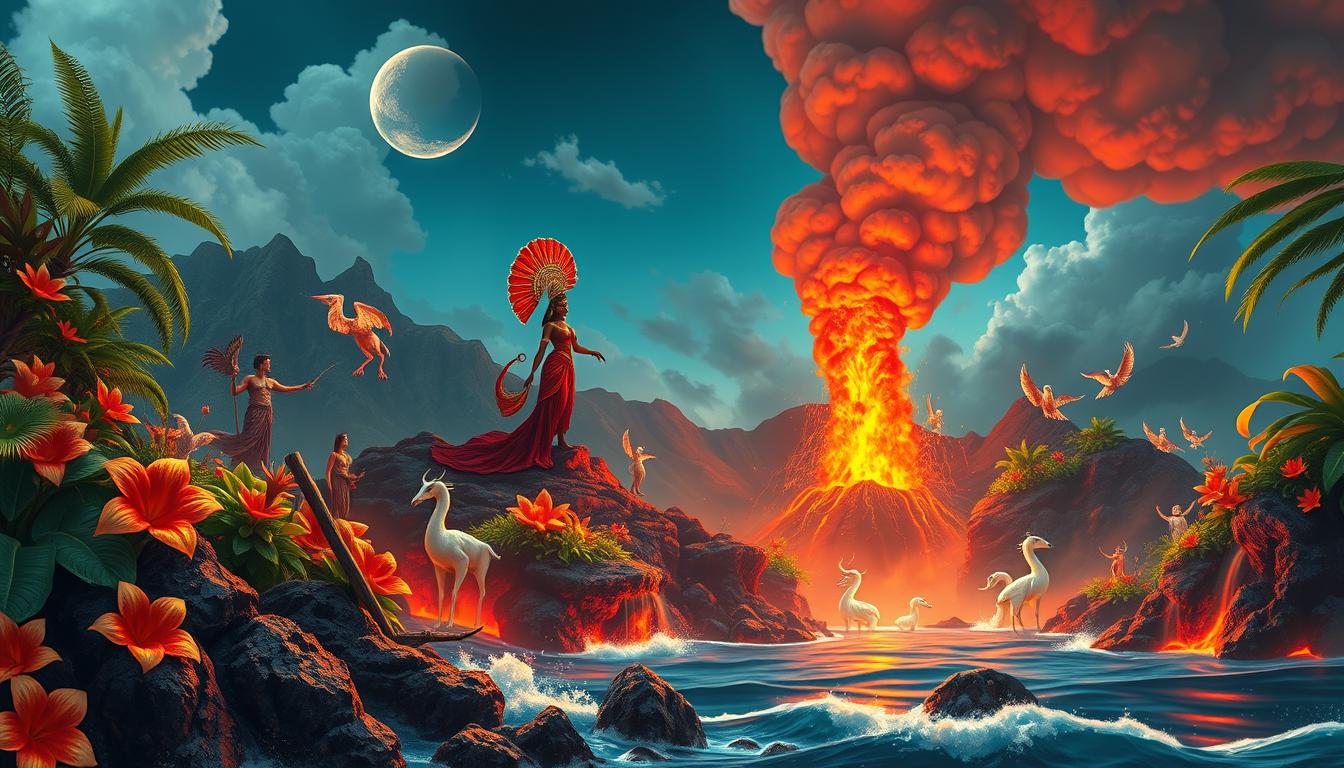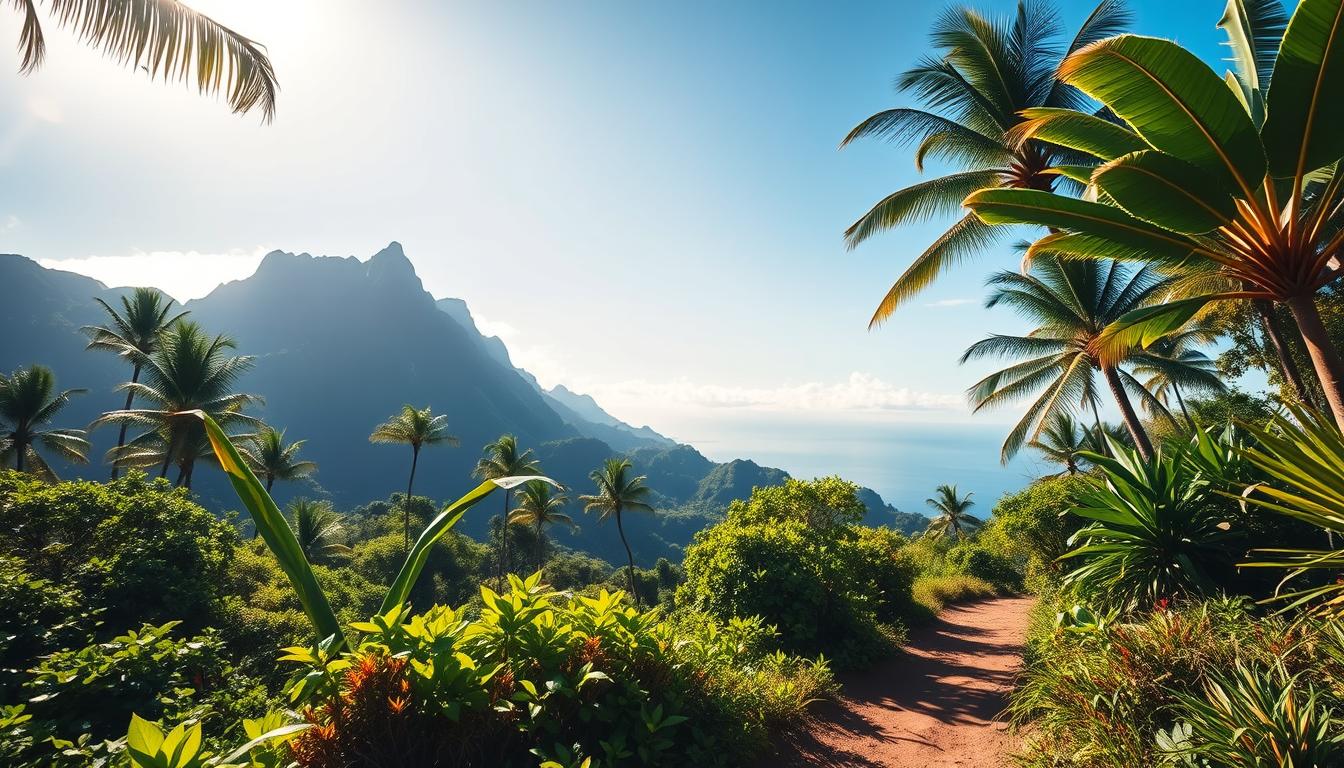Hawaii’s culture is full of life, thanks to its Native Hawaiian roots. These islands have been home to the Native Hawaiians for centuries. Being one of the most isolated places on Earth, Hawaii has created unique traditions. These traditions are closely linked to nature.
From ancient voyaging to the beautiful hula dance, Hawaii shows us its deep cultural history. This place is a window into the lasting traditions of the Hawaiian people.
Key Takeaways
- The Hawaiian Islands have been home to Native Hawaiians for thousands of years. They developed ways to live well on these distant islands.
- Native Hawaiians have a deep connection to the land and sea. They see the islands and waters as connected and important.
- The ocean was key to Native Hawaiian life. It provided food, resources, and a spiritual link.
- The Northwestern Hawaiian Islands are seen as sacred in Hawaiian traditions.
- Immigrants have brought new customs to Hawaii, blending them with the existing culture.
Native Hawaiian Cultural Heritage and Contemporary Connections
Polynesian voyaging has been key to Hawaiian culture for over 1,600 years. Navigators from the Marquesas Islands came to Hawaii, using their knowledge of the stars, ocean currents, and birds to cross the Pacific. Today, the Polynesian Voyaging Society keeps this tradition alive with the famous Hokulea canoe.
Exploration, Navigation, and Voyaging
After meeting southern Polynesia, the Hawaiian Islands were on their own for centuries. This let a unique culture grow. Mastering wayfinding was key to their survival, allowing them to cross the ocean. The Polynesian Voyaging Society now teaches these skills to new people, keeping the art of navigation alive.
Traditional Hawaiian Music and Dance
Music and dance are big parts of Native Hawaiian life. They help tell stories, celebrate, and keep history alive. Hula is a sacred dance, taught by kumu hula in hālau hula. The ukulele and slack-key guitar are also important, coming from paniolo and their Spanish guitars. These traditions are still growing, shown off at the Merrie Monarch Festival.
Hawaiian Cultural Traditions
The word “hula” brings to mind images of women in grass skirts. But it’s much more than that. To Native Hawaiians, hula is a sacred art form. It helps keep their stories and history alive. Hula comes with oli (chants) and mele (songs), taught by kumu hula (master teachers) in hālau hula (hula schools). The Merrie Monarch Festival is a big event where hālau hula from Hawaii and around the world show off their skills.
Hula: The Sacred Art Form
Hula dance is a spiritual and expressive art that’s been key to Native Hawaiian culture for ages. Hula chants and mele add deep meaning to the dance. Hula schools and kumu hula are crucial in keeping these traditions alive and sharing them with others.
Moʻolelo: Stories, Myths, and Legends
Stories, myths, and legends are the heart of Native Hawaiian culture. They start with the Kumulipo, a creation chant. These moʻolelo (stories) were once told by mouth and are now written down. Works like “Hawaiian Antiquities” and “The Legends and Myths of Hawai’i” show us the stories and figures that shape Hawaiian thought.
These moʻolelo are still told and studied today. They keep the rich Hawaiian literature and storytelling alive.
Lei Traditions and Their Significance
Lei are a big part of Native Hawaiian culture, often showing someone’s rank or status. Today, they’re worn for many special events, like welcoming visitors or celebrating graduations. Lei can be made from flowers, leaves, shells, nuts, feathers, and seeds. The Lei Day on May 1st shows how much these Hawaiian cultural traditions mean to people.
FAQ
What is the history of the Hawaiian Islands and its native people?
How did Polynesians first arrive and settle in Hawaii?
What is the significance of music and dance in Native Hawaiian culture?
What is the deeper meaning behind hula in Native Hawaiian culture?
What is the significance of stories, myths, and legends in Native Hawaiian culture?
What is the significance of lei in Native Hawaiian culture?

Scott Sweeney is the creator of Virtual Hawaii 360. Scott is a professional marketer and a lifelong Hawaii enthusiast. Scott splits time between Oahu and Dayton, Ohio. In addition to his marketing endevours, he is also a published Ukulele musician.





